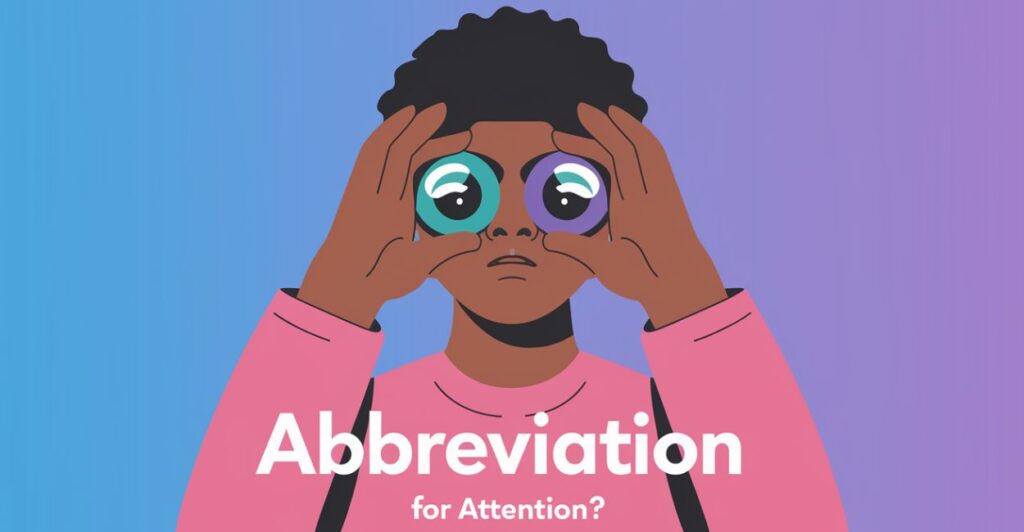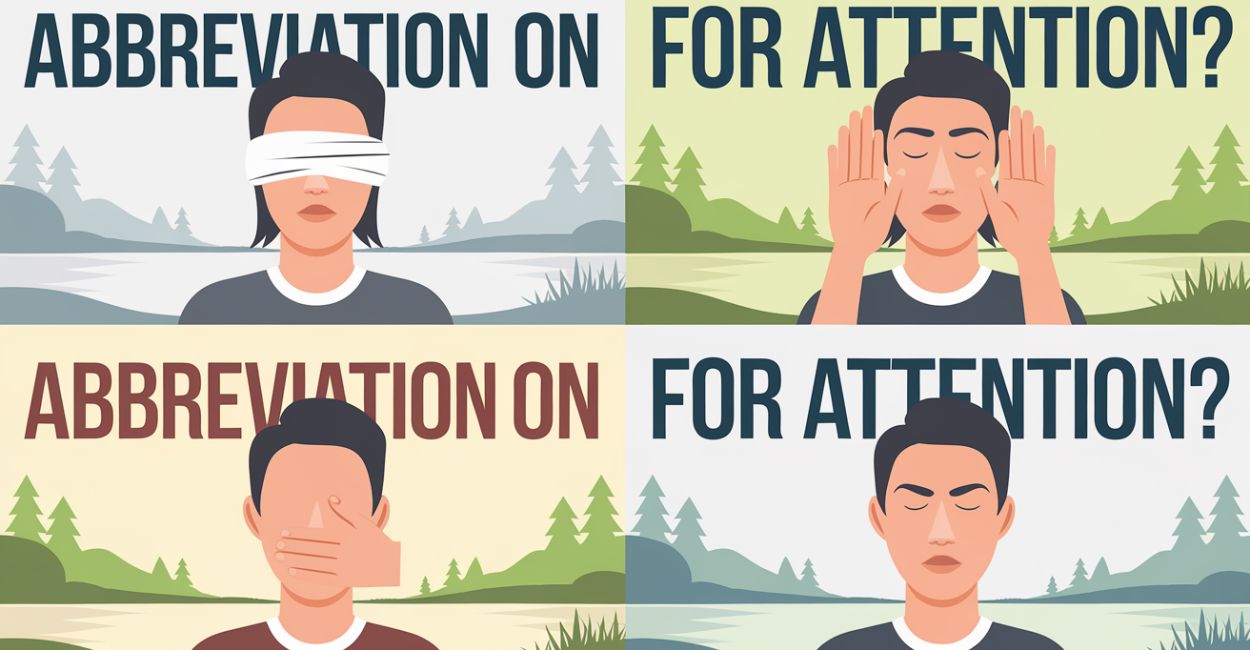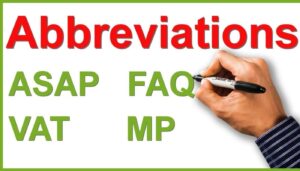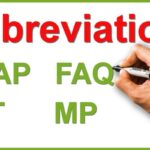In a world where time is more precious than ever and brevity is often the key to effective communication, it’s no surprise that abbreviations are commonly used to convey ideas quickly. One abbreviation that has gained popularity, particularly in the context of digital communication, is “ATTN,” which stands for “Attention.”
Whether you’re writing an email, crafting a formal letter, or preparing a social media post, understanding how to use “ATTN” properly can elevate your communication skills. But what exactly does this abbreviation mean, when should you use it, and how can you apply it in various scenarios?
This article will guide you through the essentials of the abbreviation “ATTN,” providing clarity on its meaning, its use cases, and some practical tips for using it effectively. By the end, you’ll not only have a deeper understanding of the abbreviation itself but also feel confident in using it to communicate with precision and professionalism.
What Does “ATTN” Stand For?
“ATTN” is simply an abbreviation for the word “Attention.” It is typically used to direct someone’s focus toward a particular matter or piece of information, especially when you want them to notice something important. You’ve probably seen it used in various contexts whether on envelopes, in email subject lines, or in memos at work.
Common Scenarios Where “ATTN” Is Used
The most common uses of “ATTN” revolve around directing someone’s attention to something that requires their focus. Here are some typical scenarios where you might see or use this abbreviation:
- Emails and Correspondence
In both personal and professional emails, it’s often used in the subject line or body of the message to alert the reader to the importance of the content. For instance, when sending an email to a colleague but you want to make sure a specific person sees it, you might write “ATTN: John Doe – Monthly Report Due.” - Business Memos and Letters
In formal business communications, the abbreviation can be used to highlight important information or to make sure a specific person receives the memo. For example, you might write “ATTN: Human Resources Department” if a memo or letter is meant for HR’s eyes only. - Mailing Envelopes
When sending physical mail, “ATTN” is often used to ensure that the letter or package reaches the right person or department. For example, an envelope might read “ATTN: John Smith, Marketing Director.” - Notices and Announcements
“ATTN” is also commonly used in public notices, announcements, or bulletins where attention is drawn to something of particular importance. For example, a notice posted in a building might say “ATTN: All Tenants – Water Shutoff Scheduled.”
Why Use “ATTN”?
You may wonder, why use “ATTN” instead of just writing out “Attention”? After all, it’s just one more step to type an abbreviation. However, “ATTN” serves several practical purposes:
- Brevity: In a world where people are often bombarded with information, being concise helps your communication stand out. “ATTN” is short, quick, and to the point, making it easier for the reader to quickly grasp the importance of the message.
- Formality: Using “ATTN” adds a touch of professionalism to your communication. It signals to the reader that the message is not just casual—it’s something that requires their immediate focus.
- Efficiency: Whether in an email subject line, a letter, or a note, “ATTN” helps save space. This is especially important in contexts like business communications, where clarity and brevity are valued.
When to Use “ATTN” in Different Contexts
To help you better understand how to use “ATTN” appropriately, let’s break down its application in different contexts. Here are some practical tips and examples that will guide you on when and how to use this abbreviation in various situations:

1. Professional Emails
In professional emails, “ATTN” is a great tool for drawing someone’s attention to an important piece of information. Here’s an example of when and how you might use it:
Example:
- Subject Line:
“ATTN: Marketing Team – Upcoming Strategy Meeting” - Body:
“Dear Team,
ATTN: This is a reminder about the marketing strategy meeting scheduled for next Tuesday at 10 AM. Please review the attached agenda before the meeting.”
In this scenario, the use of “ATTN” in the subject line ensures that the recipient understands that the email requires their focus. It also makes it easier for people skimming through their inbox to locate the important emails they need to act upon.
2. Sending Letters and Packages
In formal letters or when mailing packages to businesses, using “ATTN” helps ensure the right person receives the mail. Whether you’re sending a resume, an important document, or a formal inquiry, this small abbreviation can make a big difference.
Example:
- Envelope:
“ATTN: Jane Doe, Chief Executive Officer”
“XYZ Corporation”
“123 Business Rd.”
This helps the recipient immediately know who the correspondence is intended for, streamlining the mail delivery process and ensuring no delays.
3. Notices and Bulletins
Whether it’s a community announcement, an office notice, or a public posting, “ATTN” is often used to capture attention and ensure that people know to look closely at the posted information.
Example:
- Notice:
“ATTN: All Residents – Emergency Water Shutdown at 2 PM Today”
This lets the reader know that the notice is not a regular update but something that requires immediate action or awareness.
4. Informal Use
While “ATTN” is more commonly used in formal communication, it can also have a place in informal emails, messages, or texts—especially when clarity and urgency are necessary.
Example:
- Informal Email:
“ATTN: Sarah – Can you bring the meeting notes to the 3 PM call?”
In this example, you’re simply drawing attention to a specific person who needs to act. Even in informal settings, it helps ensure that the message doesn’t get overlooked.
Tips for Using “ATTN” Effectively
Using “ATTN” can make your communication more effective, but like any tool, it’s important to use it the right way. Here are a few tips to keep in mind when incorporating “ATTN” into your messages:

1. Use It for Important Messages
“ATTN” should be reserved for messages or pieces of correspondence that require immediate or focused attention. Overusing it for trivial matters may reduce its impact when you really need to get someone’s attention.
2. Keep It Professional
While it can be used in informal settings, “ATTN” is still most effective in professional contexts. It’s best to reserve it for emails, letters, and notices where you want to signal importance.
3. Avoid Overuse
If you’re communicating with multiple people, be mindful of overusing “ATTN.” It’s better to use it sparingly, making sure that when you do use it, the message truly stands out.
4. Be Clear About Who Needs Attention
When using “ATTN,” be sure to follow it with a clear identifier of the person or group you are directing the message toward. This ensures that the right recipient understands the message and can act on it.
Common Mistakes to Avoid When Using “ATTN”
While “ATTN” is a simple abbreviation, it’s still important to use it correctly to avoid any misunderstandings. Here are a few common mistakes to avoid:
- Using It in the Wrong Context
If the message isn’t urgent or doesn’t require immediate action, “ATTN” might not be necessary. Consider whether the abbreviation is appropriate before using it. - Misplacing It in the Email or Letter
When using “ATTN” in an email or letter, make sure it’s in the right spot—either in the subject line or at the top of the letter, clearly identifying the intended recipient. - Forgetting to Follow Up
After using “ATTN,” remember to follow up if necessary. The abbreviation may draw attention to the message, but if no action is taken afterward, the purpose might be lost.
Final Words
In today’s fast-paced world, abbreviations like “ATTN” offer a quick and effective way to direct attention where it’s needed most. Whether in emails, letters, or announcements, understanding how to use “ATTN” can make your communication clearer, more efficient, and more professional.
By incorporating “ATTN” thoughtfully into your correspondence, you’re not only drawing attention to important matters but also showing that you value your recipient’s time and focus. So, the next time you need to highlight something that deserves immediate attention, remember this simple tool to help your message shine.









